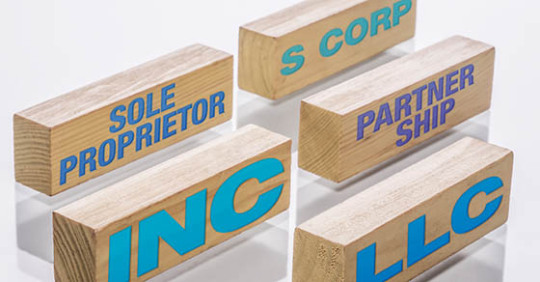#croskeylanni
Text
Employers should be wary of ERC claims that are too good to be true

The Employee Retention Credit (ERC) was a valuable tax credit that helped employers that kept workers on staff during the height of the COVID-19 pandemic. While the credit is no longer available, eligible employers that haven’t yet claimed it might still be able to do so by filing amended payroll returns for tax years 2020 and 2021.
However, the IRS is warning employers to beware of third parties that may be advising them to claim the ERC when they don’t qualify. Some third-party “ERC mills” are promising that they can get businesses a refund without knowing anything about the employers’ situations. They’re sending emails, letters and voice mails as well as advertising on television. When businesses respond, these ERC mills are claiming many improper write-offs related to taxpayer eligibility for — and computation of — the credit.
These third parties often charge large upfront fees or a fee that’s contingent on the amount of the refund. They may not inform taxpayers that wage deductions claimed on the companies’ federal income tax returns must be reduced by the amount of the credit.
According to the IRS, if a business filed an income tax return deducting qualified wages before it filed an employment tax return claiming the credit, the business should file an amended income tax return to correct any overstated wage deduction. Your tax advisor can assist with this.
Businesses are encouraged to be cautious of advertised schemes and direct solicitations promising tax savings that are too good to be true. Taxpayers are always responsible for the information reported on their tax returns. Improperly claiming the ERC could result in taxpayers being required to repay the credit along with penalties and interest.
ERC Basics
The ERC is a refundable tax credit designed for businesses that:
Continued paying employees while they were shut down due to the COVID-19 pandemic, or
Had significant declines in gross receipts from March 13, 2020, to September 30, 2021 (or December 31, 2021 for certain startup businesses).
Eligible taxpayers could have claimed the ERC on an original employment tax return or they can claim it on an amended return.
To be eligible for the ERC, employers must have:
Sustained a full or partial suspension of operations due to orders from an appropriate governmental authority limiting commerce, travel, or group meetings due to COVID-19 during 2020 or the first three quarters of 2021,
Experienced a significant decline in gross receipts during 2020 or a decline in gross receipts during the first three quarters of 2021, or
Qualified as a recovery startup business for the third or fourth quarters of 2021.
As a reminder, only recovery startup businesses are eligible for the ERC in the fourth quarter of 2021. Additionally, for any quarter, eligible employers cannot claim the ERC on wages that were reported as payroll costs in obtaining Paycheck Protection Program (PPP) loan forgiveness or that were used to claim certain other tax credits.
How to Proceed
If you didn’t claim the ERC, and believe you’re eligible, contact us. We can advise you on how to proceed.
© 2023
2 notes
·
View notes
Text
Maximize the QBI deduction before it’s gone

The qualified business income (QBI) deduction is available to eligible businesses through 2025. After that, it’s scheduled to disappear. So if you’re eligible, you want to make the most of the deduction while it’s still on the books because it can potentially be a big tax saver.
Deduction basics
The QBI deduction is written off at the owner level. It can be up to 20% of:
QBI earned from a sole proprietorship or single-member LLC that’s treated as a sole proprietorship for tax purposes, plus
QBI from a pass-through entity, meaning a partnership, LLC that’s treated as a partnership for tax purposes or S corporation.
How is QBI defined? It’s qualified income and gains from an eligible business, reduced by related deductions. QBI is reduced by: 1) deductible contributions to a self-employed retirement plan, 2) the deduction for 50% of self-employment tax, and 3) the deduction for self-employed health insurance premiums.
Unfortunately, the QBI deduction doesn’t reduce net earnings for purposes of the self-employment tax, nor does it reduce investment income for purposes of the 3.8% net investment income tax (NIIT) imposed on higher-income individuals.
Limitations
At higher income levels, QBI deduction limitations come into play. For 2024, these begin to phase in when taxable income before any QBI deduction exceeds $191,950 ($383,900 for married joint filers). The limitations are fully phased in once taxable income exceeds $241,950 or $483,900, respectively.
If your income exceeds the applicable fully-phased-in number, your QBI deduction is limited to the greater of: 1) your share of 50% of W-2 wages paid to employees during the year and properly allocable to QBI, or 2) the sum of your share of 25% of such W-2 wages plus your share of 2.5% of the unadjusted basis immediately upon acquisition (UBIA) of qualified property.
The limitation based on qualified property is intended to benefit capital-intensive businesses such as hotels and manufacturing operations. Qualified property means depreciable tangible property, including real estate, that’s owned and used to produce QBI. The UBIA of qualified property generally equals its original cost when first put to use in the business.
Finally, your QBI deduction can’t exceed 20% of your taxable income calculated before any QBI deduction and before any net capital gain (net long-term capital gains in excess of net short-term capital losses plus qualified dividends).
Unfavorable rules for certain businesses
For a specified service trade or business (SSTB), the QBI deduction begins to be phased out when your taxable income before any QBI deduction exceeds $191,950 ($383,900 for married joint filers). Phaseout is complete if taxable income exceeds $241,950 or $483,900, respectively. If your taxable income exceeds the applicable phaseout amount, you’re not allowed to claim any QBI deduction based on income from a SSTB.
Other factors
Other rules apply to this tax break. For example, you can elect to aggregate several businesses for purposes of the deduction. It may allow someone with taxable income high enough to be affected by the limitations described above to claim a bigger QBI deduction than if the businesses were considered separately.
There also may be an impact for claiming or forgoing certain deductions. For example, in 2024, you can potentially claim first-year Section 179 depreciation deductions of up to $1.22 million for eligible asset additions (subject to various limitations). For 2024, 60% first-year bonus depreciation is also available. However, first-year depreciation deductions reduce QBI and taxable income, which can reduce your QBI deduction. So, you may have to thread the needle with depreciation write-offs to get the best overall tax result.
Use it or potentially lose it
The QBI deduction is scheduled to disappear after 2025. Congress could extend it, but don’t count on it. So, maximizing the deduction for 2024 and 2025 is a worthy goal. We can help.
© 2024
0 notes
Text
Tax-wise ways to take cash from your corporation while avoiding dividend treatment

If you want to withdraw cash from your closely held corporation at a low tax cost, the easiest way is to distribute cash as a dividend. However, a dividend distribution isn’t tax efficient since it’s taxable to you to the extent of your corporation’s “earnings and profits,” but it’s not deductible by the corporation.
5 different approaches
Thankfully, there are some alternative methods that may allow you to withdraw cash from a corporation while avoiding dividend treatment. Here are five possible options:
1. Salary. Reasonable compensation that you, or family members, receive for services rendered to the corporation is deductible by the business. However, it’s also taxable to the recipient(s). The same rule applies to any compensation (in the form of rent) that you receive from the corporation for the use of property. In either case, the amount of compensation must be reasonable in relation to the services rendered or the value of the property provided. If it’s excessive, the excess will be nondeductible and treated as a corporate distribution.
2. Fringe benefits. Consider obtaining the equivalent of a cash withdrawal in fringe benefits that are deductible by the corporation and not taxable to you. Examples are life insurance, certain medical benefits, disability insurance and dependent care. Most of these benefits are tax-free only if provided on a nondiscriminatory basis to other employees of the corporation. You can also establish a salary reduction plan that allows you (and other employees) to take a portion of your compensation as nontaxable benefits, rather than as taxable compensation.
3. Capital repayments. To the extent that you’ve capitalized the corporation with debt, including amounts that you’ve advanced to the business, the corporation can repay the debt without the repayment being treated as a dividend. Additionally, interest paid on the debt can be deducted by the corporation. This assumes that the debt has been properly documented with terms that characterize debt and that the corporation doesn’t have an excessively high debt-to-equity ratio. If not, the “debt” repayment may be taxed as a dividend. If you make cash contributions to the corporation in the future, consider structuring them as debt to facilitate later withdrawals on a tax-advantaged basis.
4. Loans. You may withdraw cash from the corporation tax-free by borrowing money from it. However, to avoid having the loan characterized as a corporate distribution, it should be properly documented in a loan agreement or a note and be made on terms that are comparable to those on which an unrelated third party would lend money to you. This should include a provision for interest and principal. All interest and principal payments should be made when required under the loan terms. Also, consider the effect of the corporation’s receipt of interest income.
5. Property sales. You can withdraw cash from the corporation by selling property to it. However, certain sales should be avoided. For example, you shouldn’t sell property to a more than 50% owned corporation at a loss, since the loss will be disallowed. And you shouldn’t sell depreciable property to a more than 50% owned corporation at a gain, since the gain will be treated as ordinary income, rather than capital gain. A sale should be on terms that are comparable to those on which an unrelated third party would purchase the property. You may need to obtain an independent appraisal to establish the property’s value.
Minimize taxes
If you’re interested in discussing any of these ideas, contact us. We can help you get the maximum out of your corporation at the minimum tax cost.
© 2024
0 notes
Text
Taking your spouse on a business trip? Are the costs tax deductible?

A recent report shows that post-pandemic global business travel is going strong. The market reached $665.3 billion in 2022 and is estimated to hit $928.4 billion by 2030, according to a report from Research and Markets. If you own your own company and travel for business, you may wonder whether you can deduct the costs of having your spouse accompany you on trips.
Is your spouse an employee?
The rules for deducting a spouse’s travel costs are very restrictive. First of all, to qualify for the deduction, your spouse must be your employee. This means you can’t deduct the travel costs of a spouse, even if his or her presence has a bona fide business purpose, unless the spouse is an employee of your business. This requirement prevents tax deductibility in most cases.
If your spouse is your employee, you can deduct his or her travel costs if his or her presence on the trip serves a bona fide business purpose. Merely having your spouse perform some incidental business service, such as typing up notes from a meeting, isn’t enough to establish a business purpose. In general, it isn’t enough for his or her presence to be “helpful” to your business pursuits — it must be necessary.
In most cases, a spouse’s participation in social functions, for example as a host or hostess, isn’t enough to establish a business purpose. That is, if his or her purpose is to establish general goodwill for customers or associates, this is usually insufficient. Further, if there’s a vacation element to the trip (for example, if your spouse spends time sightseeing), it will be more difficult to establish a business purpose for his or her presence on the trip. On the other hand, a bona fide business purpose exists if your spouse’s presence is necessary to care for a serious medical condition that you have.
If your spouse’s travel satisfies these requirements, the normal deductions for business travel away from home can be claimed. These include the costs of transportation, meals, lodging, and incidental costs such as dry cleaning, phone calls, etc.
What if your spouse isn’t an employee?
Even if your spouse’s travel doesn’t satisfy the requirements, however, you may still be able to deduct a substantial portion of the trip’s costs. This is because the rules don’t require you to allocate 50% of your travel costs to your spouse. You need only allocate any additional costs you incur for him or her. For example, in many hotels the cost of a single room isn’t that much lower than the cost of a double. If a single would cost you $150 a night and a double would cost you and your spouse $200, the disallowed portion of the cost allocable to your spouse would only be $50. In other words, you can write off the cost of what you would have paid traveling alone. To prove your deduction, ask the hotel for a room rate schedule showing single rates for the days you’re staying.
And if you drive your own car or rent one, the whole cost will be fully deductible even if your spouse is along. Of course, if public transportation is used, and for meals, any separate costs incurred by your spouse aren’t deductible.
Have questions?
You want to maximize all the tax breaks you can claim for your small business. Contact us if you have questions or need assistance with this or other tax-related issues.
© 2024
0 notes
Text
What’s the best accounting method route for business tax purposes?

Businesses basically have two accounting methods to figure their taxable income: cash and accrual. Many businesses have a choice of which method to use for tax purposes. The cash method often provides significant tax benefits for eligible businesses, though some may be better off using the accrual method. Thus, it may be prudent for your business to evaluate its method to ensure that it’s the most advantageous approach.
Eligibility to use the cash method
“Small businesses,” as defined by the tax code, are generally eligible to use either cash or accrual accounting for tax purposes. (Some businesses may also be eligible to use various hybrid approaches.) Before the Tax Cuts and Jobs Act (TCJA) took effect, the gross receipts threshold for classification as a small business varied from $1 million to $10 million depending on how a business was structured, its industry and factors involving inventory.
The TCJA simplified the small business definition by establishing a single gross receipts threshold. It also increased the threshold to $25 million (adjusted for inflation), expanding the benefits of small business status to more companies. For 2024, a small business is one whose average annual gross receipts for the three-year period ending before the 2024 tax year are $30 million or less (up from $29 million for 2023).
In addition to eligibility for the cash accounting method, small businesses can benefit from advantages including:
Simplified inventory accounting,
An exemption from the uniform capitalization rules, and
An exemption from the business interest deduction limit.
Note: Some businesses are eligible for cash accounting even if their gross receipts are above the threshold, including S corporations, partnerships without C corporation partners, farming businesses and certain personal service corporations. Tax shelters are ineligible for the cash method, regardless of size.
Difference between the methods
For most businesses, the cash method provides significant tax advantages. Because cash-basis businesses recognize income when received and deduct expenses when they’re paid, they have greater control over the timing of income and deductions. For example, toward the end of the year, they can defer income by delaying invoices until the following tax year or shift deductions into the current year by accelerating the payment of expenses.
In contrast, accrual-basis businesses recognize income when earned and deduct expenses when incurred, without regard to the timing of cash receipts or payments. Therefore, they have little flexibility to time the recognition of income or expenses for tax purposes.
The cash method also provides cash flow benefits. Because income is taxed in the year received, it helps ensure that a business has the funds needed to pay its tax bill.
However, for some businesses, the accrual method may be preferable. For instance, if a company’s accrued income tends to be lower than its accrued expenses, the accrual method may result in lower tax liability. Other potential advantages of the accrual method include the ability to deduct year-end bonuses paid within the first 2½ months of the following tax year and the option to defer taxes on certain advance payments.
Switching methods
Even if your business would benefit by switching from the accrual method to the cash method, or vice versa, it’s important to consider the administrative costs involved in a change. For example, if your business prepares its financial statements in accordance with U.S. Generally Accepted Accounting Principles, it’s required to use the accrual method for financial reporting purposes. That doesn’t mean it can’t use the cash method for tax purposes, but it would require maintaining two sets of books.
Changing accounting methods for tax purposes also may require IRS approval. Contact us to learn more about each method.
© 2024
0 notes
Text
9 tax considerations if you’re starting a business as a sole proprietor

When launching a small business, many entrepreneurs start out as sole proprietors. If you’re launching a venture as a sole proprietorship, you need to understand the tax issues involved. Here are nine considerations:
1. You may qualify for the pass-through deduction. To the extent your business generates qualified business income, you’re currently eligible to claim the 20% pass-through deduction, subject to limitations. The deduction is taken “below the line,” meaning it reduces taxable income, rather than being taken “above the line” against your gross income. However, you can take the deduction even if you don’t itemize deductions and instead claim the standard deduction. Be aware that this deduction is only available through 2025, unless Congress acts to extend it.
2. You report income and expenses on Schedule C of Form 1040. The net income will be taxable to you regardless of whether you withdraw cash from the business. Your business expenses are deductible against gross income and not as itemized deductions. If you have losses, they’ll generally be deductible against your other income, subject to special rules related to hobby losses, passive activity losses and losses from activities in which you weren’t “at risk.”
3. You must pay self-employment taxes. For 2024, you pay self-employment tax (Social Security and Medicare) at a 15.3% rate on your net earnings from self-employment up to $168,600, and Medicare tax only at a 2.9% rate on the excess. An additional 0.9% Medicare tax (for a total of 3.8%) is imposed on self-employment income in excess of $250,000 for joint returns, $125,000 for married taxpayers filing separate returns and $200,000 in all other cases. Self-employment tax is imposed in addition to income tax, but you can deduct half of your self-employment tax as an adjustment to income.
4. You generally must make quarterly estimated tax payments. For 2024, these are due April 15, June 17, September 16 and January 15, 2025.
5. You can deduct 100% of your health insurance costs as a business expense. This means your deduction for medical care insurance won’t be subject to the rule that limits medical expense deductions.
6. You may be able to deduct home office expenses. If you work from a home office, perform management or administrative tasks there, or store product samples or inventory at home, you may be entitled to deduct an allocable part of certain expenses, including mortgage interest or rent, insurance, utilities, repairs, maintenance and depreciation. You may also be able to deduct travel expenses from a home office to another work location.
7. You should keep complete records of your income and expenses. Specifically, you should carefully record your expenses in order to claim all the tax breaks to which you’re entitled. Certain expenses, such as automobile, travel, meals, and home office expenses, require extra attention because they’re subject to special recordkeeping rules or deductibility limits.
8. You have more responsibilities if you hire employees. For example, you need to get a taxpayer identification number and withhold and pay over payroll taxes.
9. You should consider establishing a qualified retirement plan. The advantages are that amounts contributed to it are deductible at the time of the contributions and aren’t taken into income until they’re withdrawn. You might consider a SEP plan, which requires minimal paperwork. A SIMPLE plan is also available to sole proprietors and offers tax advantages with fewer restrictions and administrative requirements. If you don’t establish a retirement plan, you may still be able to contribute to an IRA.
Turn to us
Contact us if you want additional information regarding the tax aspects of your business, or if you have questions about reporting or recordkeeping requirements.
© 2024
0 notes
Text
Update on IRS efforts to combat questionable Employee Retention Tax Credit claims

The Employee Retention Tax Credit (ERTC) was introduced back when COVID-19 temporarily closed many businesses. The credit provided cash that helped enable struggling businesses to retain employees. Even though the ERTC expired for most employers at the end of the third quarter of 2021, it could still be claimed on amended returns after that.
According to the IRS, it began receiving a deluge of “questionable” ERTC claims as some unscrupulous promotors asserted that large tax refunds could easily be obtained — even though there are stringent eligibility requirements. “We saw aggressive marketing around this credit, and well-intentioned businesses were misled into filing claims,” explained IRS Commissioner Danny Werfel.
Last year, in a series of actions, the IRS began cracking down on potentially fraudulent claims. They began with a moratorium on processing new ERTC claims submitted after September 14, 2023. Despite this, the IRS reports that it still has more than $1 billion in ETRC claims in process and they are receiving additional scrutiny.
Here’s an update of the other compliance efforts that may help your business if it submitted a problematic claim:
1. Voluntary Disclosure Program. Under this program, businesses can “pay back the money they received after filing ERTC claims in error,” the IRS explained. The deadline for applying is March 22, 2024. If the IRS accepts a business into the program, the employer will need to repay only 80% of the credit money it received. If the IRS paid interest on the employer’s ERTC, the employer doesn’t need to repay that interest and the IRS won’t charge penalties or interest on the repaid amounts.
The IRS chose the 80% repayment amount because many of the ERTC promoters charged a percentage fee that they collected at the time (or in advance) of the payment, so the recipients never received the full credit amount.
Employers that are unable to repay the required 80% may be considered for an installment agreement on a case-by-case basis, pending submission and review of an IRS form that requires disclosing a significant amount of financial information.
To be eligible for this program, the employer must provide the IRS with the name, address and phone number of anyone who advised or assisted them with their claims, and details about the services provided.
2. Special withdrawal program. If a business has a pending claim for which it has eligibility concerns, it can withdraw the claim. This program is also available to businesses that were paid money from the IRS for claims but haven’t cashed or deposited the refund checks. The tax agency reported that more than $167 million from pending applications had been withdrawn through mid-January.
Much-needed relief
Commissioner Werfel said the disclosure program “provides a much-needed option for employers who were pulled into these claims and now realize they shouldn’t have applied.”
In addition to the programs described above, the IRS has been sending letters to thousands of taxpayers notifying them their claims have been disallowed. These cases involve entities that didn’t exist or didn’t have employees on the payroll during the eligibility period, “meaning the businesses failed to meet the basic criteria” for the credit, the IRS stated. Another set of letters will soon be mailed to credit recipients who claimed an erroneous or excessive credit. They’ll be informed that the IRS will recapture the payments through normal collection procedures.
There’s an application form that employers must file to participate in the Voluntary Disclosure Program and procedures that must be followed for the withdrawal program. Other rules apply. Contact us for assistance or with questions.
© 2024
0 notes
Text
Should your business offer the new
emergency savings accounts to employees?

As part of the SECURE 2.0 law, there’s a new benefit option for employees facing emergencies. It’s called a pension-linked emergency savings account (PLESA) and the provision authorizing it became effective for plan years beginning January 1, 2024. The IRS recently released guidance about the accounts (in Notice 2024-22) and the U.S. Department of Labor (DOL) published some frequently asked questions to help employers, plan sponsors, participants and others understand them.
PLESA basics
The DOL defines PLESAs as “short-term savings accounts established and maintained within a defined contribution plan.” Employers with 401(k), 403(b) and 457(b) plans can opt to offer PLESAs to non-highly compensated employees. For 2024, a participant who earned $150,000 or more in 2023 is a highly compensated employee.
Here are some more details of this new type of account:
The portion of the account balance attributable to participant contributions can’t exceed $2,500 (or a lower amount determined by the plan sponsor) in 2024. The $2,500 amount will be adjusted for inflation in future years.
Employers can offer to enroll eligible participants in these accounts beginning in 2024 or can automatically enroll participants in them.
The account can’t have a minimum contribution to open or a minimum account balance.
Participants can make a withdrawal at least once per calendar month, and such withdrawals must be distributed “as soon as practicable.”
For the first four withdrawals from an account in a plan year, participants can’t be subject to any fees or charges. Subsequent withdrawals may be subject to reasonable fees or charges.
Contributions must be held as cash, in an interest-bearing deposit account or in an investment product.
If an employee has a PLESA and isn’t highly compensated, but becomes highly compensated as defined under tax law, he or she can’t make further contributions but retains the right to withdraw the balance.
Contributions will be made on a Roth basis, meaning they are included in an employee’s taxable income but participants won’t have to pay tax when they make withdrawals.
Proof of an event not necessary
A participant in a PLESA doesn’t need to prove that he or she is experiencing an emergency before making a withdrawal from an account. The DOL states that “withdrawals are made at the discretion of the participant.”
These are just the basic details of PLESAs. Contact us if you have questions about these or other fringe benefits and their tax implications.
© 2024
0 notes
Text
Tax-favored Qualified Small Business Corporation status could help you thrive

Operating your small business as a Qualified Small Business Corporation (QSBC) could be a tax-wise idea.
Tax-free treatment for eligible stock gains
QSBCs are the same as garden-variety C corporations for tax and legal purposes — except QSBC shareholders are potentially eligible to exclude from federal income tax 100% of their stock sale gains. That translates into a 0% federal income tax rate on QSBC stock sale profits! However, you must meet several requirements set forth in Section 1202 of the Internal Revenue Code, and not all shares meet the tax-law description of QSBC stock. Finally, there are limitations on the amount of QSBC stock sale gain that you can exclude in any one tax year (but they’re unlikely to apply).
Stock acquisition date is key
The 100% federal income tax gain exclusion is only available for sales of QSBC shares that were acquired on or after September 28, 2010.
If you currently operate as a sole proprietorship, single-member LLC treated as a sole proprietorship, partnership or multi-member LLC treated as a partnership, you’ll have to incorporate the business and issue yourself shares to attain QSBC status.
Important: The act of incorporating a business shouldn’t be taken lightly. We can help you evaluate the pros and cons of taking this step.
Here are some more rules and requirements:
Eligibility. The gain exclusion break isn’t available for QSBC shares owned by another C corporation. However, QSBC shares held by individuals, LLCs, partnerships, and S corporations are potentially eligible.
Holding period. To be eligible for the 100% stock sale gain exclusion deal, you must hold your QSBC shares for over five years. For shares that haven’t yet been issued, the 100% gain exclusion break will only be available for sales that occur sometime in 2029 or beyond.
Acquisition of shares. You must acquire the shares after August 10, 1993, and they generally must be acquired upon original issuance by the corporation or by gift or inheritance.
Businesses that aren’t eligible. The corporation must actively conduct a qualified business. Qualified businesses don’t include those rendering services in the fields of health; law; engineering; architecture; accounting; actuarial science; performing arts; consulting; athletics; financial services; brokerage services; businesses where the principal asset is the reputation or skill of employees; banking; insurance; leasing; financing; investing; farming; production or extraction of oil, natural gas, or other minerals for which percentage depletion deductions are allowed; or the operation of a hotel, motel, restaurant, or similar business.
Asset limits. The corporation’s gross assets can’t exceed $50 million immediately after your shares are issued. If after the stock is issued, the corporation grows and exceeds the $50 million threshold, it won’t lose its QSBC status for that reason.
2017 law sweetened the deal
The Tax Cuts and Jobs Act made a flat 21% corporate federal income tax rate permanent, assuming no backtracking by Congress. So, if you own shares in a profitable QSBC and you eventually sell them when you’re eligible for the 100% gain exclusion break, the 21% corporate rate could be all the income tax that’s ever owed to Uncle Sam.
Tax incentives drive the decision
Before concluding that you can operate your business as a QSBC, consult with us. We’ve summarized the most important eligibility rules here, but there are more. The 100% federal income tax stock sale gain exclusion break and the flat 21% corporate federal income tax rate are two strong incentives for eligible small businesses to operate as QSBCs.
© 2024
0 notes
Text
Does your business have employees who get tips? You may qualify for a tax credit

If you’re an employer with a business where tipping is routine when providing food and beverages, you may qualify for a federal tax credit involving the Social Security and Medicare (FICA) taxes that you pay on your employees’ tip income.
Credit fundamentals
The FICA credit applies to tips that your staff members receive from customers when they buy food and beverages. It doesn’t matter if the food and beverages are consumed on or off the premises. Although tips are paid by customers, for FICA purposes, they’re treated as if you paid them to your employees.
As you know, your employees are required to report their tips to you. You must:
Withhold and remit the employee’s share of FICA taxes, and
Pay the employer’s share of those taxes.
How the credit is claimed
You claim the credit as part of the general business credit. It’s equal to the employer’s share of FICA taxes paid on tip income in excess of what’s needed to bring your employee’s wages up to $5.15 per hour. In other words, no credit is available to the extent the tip income just brings the employee up to the $5.15-per-hour level, calculated monthly. If you pay each employee at least $5.15 an hour (excluding tips), you don’t have to be concerned with this calculation.
Note: A 2007 tax law froze the per-hour amount at $5.15, which was the amount of the federal minimum wage at that time. The minimum wage is now $7.25 per hour but the amount for credit computation purposes remains $5.15.
Let’s look at an example
Let’s say a server works at your restaurant. She is paid $2.13 an hour plus tips. During the month, she works 160 hours for $340.80 and receives $2,000 in cash tips which she reports to you.
The server’s $2.13-an-hour rate is below the $5.15 rate by $3.02 an hour. Thus, for the 160 hours worked, she is below the $5.15 rate by $483.20 (160 times $3.02). For the server, therefore, the first $483.20 of tip income just brings her up to the minimum rate. The rest of the tip income is $1,516.80 ($2,000 minus $483.20). As the server’s employer, you pay FICA taxes at the rate of 7.65% for her. Therefore, your employer credit is $116.03 for the month: $1,516.80 times 7.65%.
While the employer’s share of FICA taxes is generally deductible, the FICA taxes paid with respect to tip income used to determine the credit can’t be deducted, because that would amount to a double benefit. However, you can elect not to take the credit, in which case you can claim the deduction.
Get the credit you deserve
If your business pays FICA taxes on tip income paid to your employees, the tip tax credit may be valuable to you. Other rules may apply. Contact us if you have any questions.
© 2024
0 notes
Text
The standard business mileage rate will be going up slightly in 2024

The optional standard mileage rate used to calculate the deductible cost of operating an automobile for business will be going up by 1.5 cents per mile in 2024. The IRS recently announced that the cents-per-mile rate for the business use of a car, van, pickup or panel truck will be 67 cents (up from 65.5 cents for 2023).
The increased tax deduction partly reflects the price of gasoline, which is about the same as it was a year ago. On December 21, 2023, the national average price of a gallon of regular gas was $3.12, compared with $3.10 a year earlier, according to AAA Gas Prices.
Standard rate vs. tracking expenses
Businesses can generally deduct the actual expenses attributable to business use of vehicles. These include gas, tires, oil, repairs, insurance, licenses and vehicle registration fees. In addition, you can claim a depreciation allowance for the vehicle. However, in many cases, certain limits apply to depreciation write-offs on vehicles that don’t apply to other types of business assets.
The cents-per-mile rate is helpful if you don’t want to keep track of actual vehicle-related expenses. However, you still must record certain information, such as the mileage for each business trip, the date and the destination.
The standard rate is also used by businesses that reimburse employees for business use of their personal vehicles. These reimbursements can help attract and retain employees who drive their personal vehicles for business purposes. Why? Under current law, employees can’t deduct unreimbursed employee business expenses, such as business mileage, on their own income tax returns.
If you use the cents-per-mile rate, keep in mind that you must comply with various rules. If you don’t comply, reimbursements to employees could be considered taxable wages to them.
Rate calculation
The business cents-per-mile rate is adjusted annually. It’s based on an annual study commissioned by the IRS about the fixed and variable costs of operating a vehicle, such as gas, maintenance, repairs and depreciation. Occasionally, if there’s a substantial change in average gas prices, the IRS will change the rate midyear.
Not always allowed
There are cases when you can’t use the cents-per-mile rate. In some situations, it depends on how you’ve claimed deductions for the same vehicle in the past. In other situations, it hinges on if the vehicle is new to your business this year or whether you want to take advantage of certain first-year depreciation tax breaks on it.
As you can see, there are many factors to consider in deciding whether to use the standard mileage rate to deduct business vehicle expenses. We can help if you have questions about tracking and claiming such expenses in 2024 — or claiming 2023 expenses on your 2023 tax return.
© 2023
0 notes
Text
Giving gifts and throwing parties can help show gratitude and provide tax breaks

The holiday season is here! During this festive season, your business may want to show its gratitude to employees and customers by giving them gifts or hosting holiday parties. It’s a good time to review the tax rules associated with these expenses. Are they tax deductible by your business and is the value taxable to the recipients?
Employee gifts
Many businesses want to show their employees appreciation during the holiday time. In general, anything of value that you transfer to an employee is included in his or her taxable income (and, therefore, subject to income and payroll taxes) and deductible by your business.
But there’s an exception for noncash gifts that constitute a “de minimis” fringe benefit. These are items small in value and given so infrequently that they are administratively impracticable to account for. Common examples include holiday turkeys or hams, gift baskets, occasional sports or theater tickets (but not season tickets), and other low-cost merchandise.
De minimis fringe benefits aren’t included in your employees’ taxable income yet they’re still deductible by your business. Unlike gifts to customers, there’s no specific dollar threshold for de minimis gifts. However, many businesses use an informal cutoff of $75.
Key point: Cash gifts — as well as cash equivalents, such as gift cards — are included in an employee’s income and subject to payroll tax withholding regardless of how small they are and infrequently they’re given.
Customer gifts
If you make gifts to customers or clients, they’re only deductible up to $25 per recipient, per year. For purposes of the $25 limit, you don’t need to include “incidental” costs that don’t substantially add to the gift’s value, such as engraving, gift wrapping, packaging or shipping. Also excluded from the $25 limit is branded marketing collateral — such as small items imprinted with your company’s name and logo — provided they’re widely distributed and cost less than $4 each.
The $25 limit is for gifts to individuals. There’s no set limit on gifts to a company (for example, a gift basket for all of a customer’s team members to share) as long as the cost is “reasonable.”
A holiday party
Under the Tax Cuts and Jobs Act, certain deductions for business-related meals were reduced and the deduction for business entertainment was eliminated. However, there’s an exception for certain recreational activities, including holiday parties.
Holiday parties are fully deductible (and excludible from recipients’ income) so long as they’re primarily for the benefit of employees who aren’t highly compensated and their families. If customers, and others also attend, a holiday party may be partially deductible.
Holiday cards
Sending holiday cards is a nice way to show customers and clients your appreciation. If you use the cards to promote your business, you can probably deduct the cost. Incorporate your company name and logo, and you might even want to include a discount coupon for your products or services.
Boost morale with festive gestures
If you have questions about giving holiday gifts to employees or customers or throwing a holiday party, contact us. We can explain the tax implications.
© 2023
0 notes
Text
A company car is a valuable perk but don’t forget about taxes

One of the most appreciated fringe benefits for owners and employees of small businesses is the use of a company car. This perk results in tax deductions for the employer as well as tax breaks for the owners and employees driving the cars. (And of course, they enjoy the nontax benefit of using a company car.) Even better, current federal tax rules make the benefit more valuable than it was in the past.
Rolling out the rules
Let’s take a look at how the rules work in a typical situation. For example, a corporation decides to supply the owner-employee with a company car. The owner-employee needs the car to visit customers and satellite offices, check on suppliers and meet with vendors. He or she expects to drive the car 8,500 miles a year for business and also anticipates using the car for about 7,000 miles of personal driving. This includes commuting, running errands and taking weekend trips. Therefore, the usage of the vehicle will be approximately 55% for business and 45% for personal purposes. Naturally, the owner-employee wants an attractive car that reflects positively on the business, so the corporation buys a new $57,000 luxury sedan.
The cost for personal use of the vehicle is equal to the tax the owner-employee pays on the fringe benefit value of the 45% personal mileage. In contrast, if the owner-employee bought the car to drive the personal miles, he or she would pay out-of-pocket for the entire purchase cost of the car.
Personal use is treated as fringe benefit income. For tax purposes, the corporation treats the car much the same way it would any other business asset, subject to depreciation deduction restrictions if the auto is purchased. Out-of-pocket expenses related to the car (including insurance, gas, oil and maintenance) are deductible, including the portion that relates to personal use. If the corporation finances the car, the interest it pays on the loan is deductible as a business expense (unless the business is subject to the business interest expense deduction limitation under the tax code).
On the other hand, if the owner-employee buys the auto, he or she isn’t entitled to any deductions. Outlays for the business-related portion of driving are unreimbursed employee business expenses, which are nondeductible from 2018 to 2025 due to the suspension of miscellaneous itemized deductions under the Tax Cuts and Jobs Act. And if the owner-employee finances the car personally, the interest payments are nondeductible.
One other implication: The purchase of the car by the corporation has no effect on the owner-employee’s credit rating.
Careful recordkeeping is essential
Supplying a vehicle for an owner’s or key employee’s business and personal use comes with complications and paperwork. Personal use needs to be tracked and valued under the fringe benefit tax rules and treated as income. This article only explains the basics.
Despite the necessary valuation and paperwork, a company-provided car is still a valuable fringe benefit for business owners and key employees. It can provide them with the use of a vehicle at a low tax cost while generating tax deductions for their businesses. (You may even be able to transfer the vehicle to the employee when you’re ready to dispose of it, but that involves other tax implications.) We can help you stay in compliance with the rules and explain more about this fringe benefit.
© 2023
0 notes
Text
Choosing a Business Entity: Which Way to Go?

If you’re planning to start a business or thinking about changing your business entity, you need to determine what will work best for you. Should you operate as a C corporation or a pass-through entity such as a sole-proprietorship, partnership, limited liability company (LLC) or S corporation? There are many issues to consider.
Currently, the corporate federal income tax is imposed at a flat 21% rate, while individual federal income tax rates currently begin at 10% and go up to 37%. The difference in rates can be alleviated by the qualified business income (QBI) deduction that’s available to eligible pass-through entity owners that are individuals, and some estates and trusts.
Individual rate caveats
The QBI deduction is scheduled to end in 2026, unless Congress acts to extend it, while the 21% corporate rate is not scheduled to expire. Also, noncorporate taxpayers with modified adjusted gross incomes above certain levels are subject to an additional 3.8% tax on net investment income.
Organizing a business as a C corporation instead of a pass-through entity may reduce the current federal income tax on the business’s income. The corporation can still pay reasonable compensation to the shareholders and pay interest on loans from the shareholders. That income will be taxed at higher individual rates, but the overall rate on the corporation’s income can be lower than if the business was operated as a pass-through entity.
More to take into account
There are other tax-related factors to take into consideration. For example:
If most of the business profits will be distributed to the owners, it may be preferable to operate the business as a pass-through entity rather than a C corporation, since the shareholders will be taxed on dividend distributions from the corporation (double taxation). In contrast, owners of a pass-through entity will only be taxed once, at the personal level, on business income. However, the impact of double taxation must be evaluated based on projected income levels for both the business and its owners.
If the value of the assets is likely to appreciate, it’s generally preferable to conduct business as a pass-through entity to avoid a corporate tax when the assets are sold or the business is liquidated. Although corporate level tax will be avoided if the corporation’s shares, rather than its assets, are sold, the buyer may insist on a lower price because the tax basis of appreciated business assets cannot be stepped up to reflect the purchase price. That can result in much lower post-purchase depreciation and amortization deductions for the buyer.
If the business is a pass-through entity, an owner’s basis in his or her interest in the entity is stepped-up by the entity income that’s allocated to the owner. That can result in less taxable gain for the owner when his or her interests in the entity are sold.
If the business is expected to incur tax losses for a while, you may want to structure it as a pass-through entity so you can deduct the losses against other income. Conversely, if you have insufficient other income or the losses aren’t usable (for example, because they’re limited by the passive loss rules), it may be preferable for the business to be a C corporation, since it’ll be able to offset future income with the losses.
If the owner of a business is subject to the alternative minimum tax (AMT), it may be preferable to organize as a C corporation, since corporations aren’t subject to the AMT. Affected individuals are subject to the AMT at 26% or 28% rates.
As you can see, there are many factors involved in operating a business as a certain type of entity. This only covers a few of them. For more details about how to proceed in your situation, consult with us.
© 2023
0 notes
Text
Guaranteeing a loan to your corporation? There may be tax implications

Let’s say you decide to, or are asked to, guarantee a loan to your corporation. Before agreeing to act as a guarantor, endorser or indemnitor of a debt obligation of your closely held corporation, be aware of the possible tax implications. If your corporation defaults on the loan and you’re required to pay principal or interest under the guarantee agreement, you don’t want to be caught unaware.
A business bad debt
If you’re compelled to make good on the obligation, the payment of principal or interest in discharge of the obligation generally results in a bad debt deduction. This may be either a business or a nonbusiness bad debt deduction. If it’s a business bad debt, it’s deductible against ordinary income. A business bad debt can be either totally or partly worthless. If it’s a nonbusiness bad debt, it’s deductible as a short-term capital loss, which is subject to certain limitations on deductions of capital losses. A nonbusiness bad debt is deductible only if it’s totally worthless.
In order to be treated as a business bad debt, the guarantee must be closely related to your trade or business. If the reason for guaranteeing the corporation loan is to protect your job, the guarantee is considered closely related to your trade or business as an employee. But employment must be the dominant motive. If your annual salary exceeds your investment in the corporation, this generally shows that the dominant motive for the guarantee was to protect your job. On the other hand, if your investment in the corporation substantially exceeds your annual salary, that’s evidence that the guarantee was primarily to protect your investment rather than your job.
Except in the case of job guarantees, it may be difficult to show the guarantee was closely related to your trade or business. You’d have to show that the guarantee was related to your business as a promoter, or that the guarantee was related to some other trade or business separately carried on by you.
If the reason for guaranteeing your corporation’s loan isn’t closely related to your trade or business and you’re required to pay off the loan, you can take a nonbusiness bad debt deduction if you show that your reason for the guarantee was to protect your investment, or you entered the guarantee transaction with a profit motive.
More rules
In addition to satisfying the above requirements, a business or nonbusiness bad debt is deductible only if you meet these three requirements:
You have a legal duty to make the guaranty payment (although there’s no requirement that a legal action be brought against you).
The guaranty agreement was entered into before the debt became worthless.
You received reasonable consideration (not necessarily cash or property) for entering into the guaranty agreement.
Any payment you make on a loan you guaranteed is deductible as a bad debt in the year you make it, unless the agreement (or local law) provides for a right of subrogation against the corporation. If you have this right, or some other right to demand payment from the corporation, you can’t take a bad debt deduction until the rights become partly or totally worthless.
These are only some of the possible tax consequences of guaranteeing a loan to your closely held corporation. To learn all the implications in your situation, consult with us.
© 2023
0 notes
Text
Receive more than $10,000 in cash at your business? Here’s what you must do

Does your business receive large amounts of cash or cash equivalents? If so, you’re generally required to report these transactions to the IRS — and not just on your tax return.
The requirements
Each person who, in the course of operating a trade or business, receives more than $10,000 in cash in one transaction (or two or more related transactions), must file Form 8300. Who is a “person”? It can be an individual, company, corporation, partnership, association, trust or estate. What are considered “related transactions”? Any transactions conducted in a 24-hour period. Transactions can also be considered related even if they occur over a period of more than 24 hours if the recipient knows, or has reason to know, that each transaction is one of a series of connected transactions.
In order to complete a Form 8300, you’ll need personal information about the person making the cash payment, including a Social Security or taxpayer identification number.
The definition of “cash” and “cash equivalents”
For Form 8300 reporting purposes, cash includes U.S. currency and coins, as well as foreign money. It also includes cash equivalents such as cashier’s checks (sometimes called bank checks), bank drafts, traveler’s checks and money orders.
Money orders and cashier’s checks under $10,000, when used in combination with other forms of cash for a single transaction that exceeds $10,000, are defined as cash for Form 8300 reporting purposes.
Note: Under a separate reporting requirement, banks and other financial institutions report cash purchases of cashier’s checks, treasurer’s checks and/or bank checks, bank drafts, traveler’s checks and money orders with a face value of more than $10,000 by filing currency transaction reports.
The reasons for reporting
Although many cash transactions are legitimate, the IRS explains that the information reported on Form 8300 “can help stop those who evade taxes, profit from the drug trade, engage in terrorist financing and conduct other criminal activities. The government can often trace money from these illegal activities through the payments reported on Form 8300 and other cash reporting forms.”
Failing to comply with the law can result in fines and even jail time. In one case, a Niagara Falls, NY, business owner was convicted of willful failure to file Form 8300 after receiving cash transactions of more than $10,000. In a U.S. District Court, he pled guilty and was recently sentenced to five months home detention, fined $10,000 and he agreed to pay restitution to the IRS. He had received cash rent payments in connection with a building in which he had an ownership interest.
Forms can be sent electronically
Businesses required to file reports of large cash transactions on Forms 8300 should know that in addition to filing on paper, e-filing is an option. The form is due 15 days after a transaction and there’s no charge for the e-file option. Businesses that file electronically get an automatic confirmation of receipt when they file.
Effective January 1, 2024, you may have to e-file Forms 8300 if you’re required to e-file other information returns, such as 1099 and W-2 forms. You must e-file if you’re required to file at least 10 information returns other than Form 8300 during a calendar year.
The IRS also reminds businesses that they can “batch file” their reports, which is especially helpful to those required to file many forms.
Record retention
You should keep a copy of each Form 8300 for five years from the date you file it, according to the IRS. “Confirmation receipts don’t meet the recordkeeping requirement,” the tax agency added.
Contact us with any questions or for assistance.
© 2023
0 notes